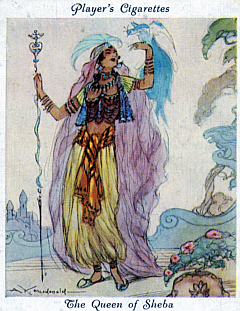 | The Evolution and Migration of Henna into Cultural Practices: Evidence of early cultural henna use in the Arabian Peninsula and along the Arabian Ocean Though a henna-using culture may feel that henna began "here" and has been "here" since the beginning of time;' that cannot actually be true. Henna has a specific bio-zone necessary for growth, and the use of henna as a cultural practice will not evolve without henna, the plant, growing and available in the area. It is possible to track the cultural movement of henna by looking for climate changes. Read more: http://tapdancinglizard.com/AS_henna_for_hair/cha... |
 | Five frequently asked questions Answers to the questions our customers ask most often. View the video: https://vimeo.com/456610183 |
 | Back to Nature: Is Henna the Future of Commercial Hair Dye? Commercial hair dye companies are slowly learning a painful secret: “Fast, easy, and cheap� has been beneficial for business for just over a century, but will not be sustainable in the coming decades. The majority of permanent and semi-permanent hair dyes available in stores and used in salons contain para-phenylenediamine (PPD). PPD, a coal-tar derivative dye, was first used as a commercial fur dye until consumers quickly realized that they could use it on their own hair [1]. PPD-based hair dyes entered the market at the turn of the 20th century. Oxidative hair dyes could be made in a range of colors. The products were easy to use and worked quickly. The color result was relatively permanent. These features made PPD dyes very attractive. Read more:https://www.ancientsunrise.blog/back-to-nature-is-henna-the-future-of-commercial-hair-dye/ |
 | PPD Sensitization in Men: Unique Risks and Gendered Behavior Occupations that involve repeated exposure to PPD, such as hair stylists, and fur and textile workers, show higher rates of employees with PPD sensitization [13]. Outside of occupation-related sensitization, the average person is sensitized to PPD through a black henna tattoo, or through the use of hair dye. Prevalence rates of PPD sensitization are about 6.2% in North America, 4% in Europe, and 4.3% in Asia [1]. Overall, sensitization rates appear to be increasing over time [2]. Rates are higher in populations with darker hair, as dark hair dyes contain higher PPD concentrations. Rates of sensitization are also higher in countries where “black henna� is commonly used in place of traditional henna. Read more:http://www.becomingmoonlight.blog/2017/10/30/ppd-sensitization-in-men-unique-risks-and-gendered-behavior/ |
Please visit Mehandi.com on the web at http://www.mehandi.com. You can also find some of your favorite Ancient Sunrise products at Amazon.com[https://goo.gl/avLHWc]or on our Facebook social store[https://goo.gl/4utZfP].